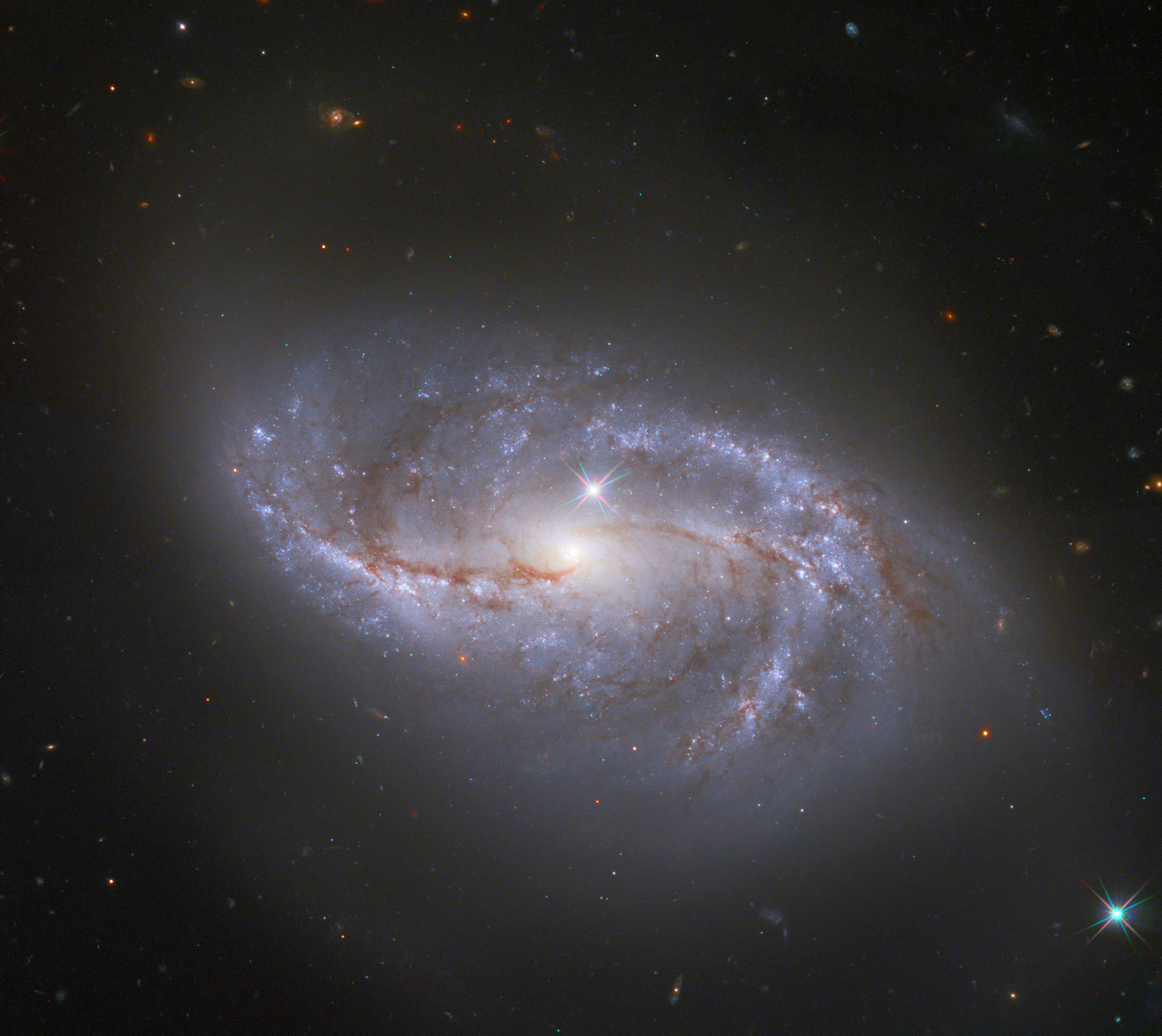Looking deep into the universe, the NASA/ESA Hubble Space Telescope catches a passing glimpse of the numerous arm-like structures that sweep around this barred spiral galaxy, known as NGC 2608. Appearing as a slightly stretched, smaller version of our Milky Way, the peppered blue and red spiral arms are anchored together by the prominent horizontal central bar of the galaxy.
In Hubble photos like this, bright foreground stars in the Milky Way will sometimes appear as pinpoints of light with prominent light flares known as diffraction spikes, an effect of the telescope optics. A star with these features is seen in the lower right corner of the image, and another can be spotted just above the pale center of the galaxy. The majority of the fainter points around NGC 2608, however, lack these features, and upon closer inspection they are revealed to be thousands of distant galaxies. NGC 2608 is just one among an uncountable number of kindred structures.
Similar expanses of galaxies can be observed in other Hubble images such as the Hubble Deep Field, which recorded over 3,000 galaxies in one field of view.
Text credit: ESA (European Space Agency)
Image credit: ESA/Hubble & NASA, A. Riess et al.
向宇宙深处看去,NASA/ESA的哈勃太空望远镜望可以一眼瞥见无数臂状结构,这些结构围绕着这个被禁止的螺旋星系,即NGC2608。这两条斑纹的蓝色旋臂和红色旋臂被银河系中央显著的水平中心杆固定在一起,看起来就像是银河系的一个稍微拉伸的、更小的版本。
在哈勃拍摄的这类照片中,星系中明亮的前景恒星有时会呈现出带有被称为衍射峰的突出耀斑的光点,这是望远镜光学系统的作用。这是望远镜光学的效果。在图像的右下角可以看到一颗具有这些特征的恒星,而在星系的苍白中心上方则可以发现另一颗恒星。然而,NGC 2608周围大多数较暗的点却没有这些特征,经过更近距离的观察,我们发现它们是数千个遥远的星系。ngc2608只是众多同类结构中的一个。
在其他的哈勃图像中也可以观察到类似的广阔星系,比如哈勃深空,它在一个视野中记录了超过3000个星系。
文字来源:ESA (European Space Agency)
影像来源:ESA/Hubble & NASA, A. Riess et al.







